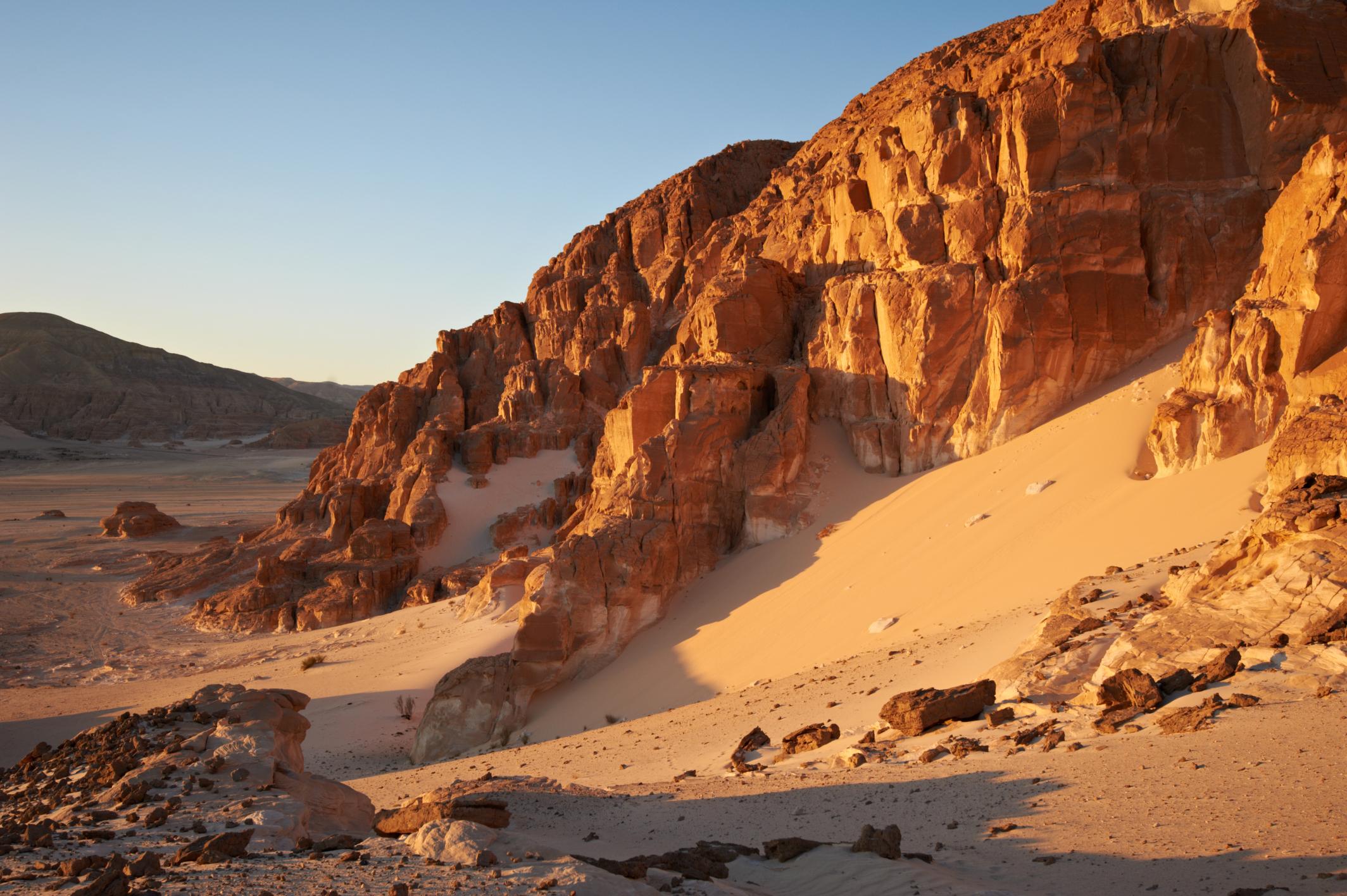
Discover The Egypt Sinai Peninsula
It is Egypt's Desert & Beach Paradise Revealed
Imagine soaring mountains that blush pink at sunrise, crystal-clear waters teeming with vibrant coral reefs, and ancient monasteries that whisper tales of faith. Sinai is more than a destination; it is an adventure for the soul.
From the rugged peaks of Mount Sinai to the sun-drenched beaches of Sharm El Sheikh and Dahab, the Egypt Sinai peninsula offers a kaleidoscope of experiences. Hike through dramatic canyons, dive into the breathtaking depths of the Red Sea, or simply unwind in luxurious seaside resorts.
Beyond the landscapes, Sinai’s spirit shines through its people. Discover the rich Bedouin culture, their legendary hospitality, and their deep connection to the land. Every sunrise, every wave, and every ancient stone invites you to explore not just a place but a profound and unforgettable journey within yourself.
Egypt Sinai peninsula Where Desert Majesty Meets Coastal Paradise
Travelers have marveled at the Egypt Sinai Peninsula's wonders for over 5000 years. This extraordinary Egyptian region combines sacred landmarks such as the 2,285-meter Mount Sinai with spectacular coastal attractions. Its waters are home to more than 1,000 species of fish.
Saint Catherine's Monastery, a UNESCO World Heritage Site, stands as a testament to the area's rich history. The pristine desert landscapes of Sinai offer countless adventures. Sharm el-Sheikh’s beaches provide some of the region’s finest snorkeling and diving spots. Adventure seekers can challenge themselves along the 550-kilometer Sinai Trail.
This remarkable peninsula brings together ancient history and modern tourism. Sacred mountains rise above vibrant coral reefs. Your journey can take you from windswept summits to crystal-clear seas, making the Sinai Peninsula a true Egyptian paradise.
Egypt Sinai Peninsula
The Sinai Peninsula stands as a triangular bridge between Africa and Asia. This remarkable piece of land covers about 60,000 square kilometers and remains the only part of Egypt that sits in Asia. The Mediterranean Sea touches its northern shores, while the Red Sea washes its southern coast. The Suez Canal marks its western edge, and the Gaza Strip borders it to the east.
Two main governorates divide the peninsula administratively. North Sinai (Shamal Sina') has its capital at Al Arish, while South Sinai (Janub Sina') operates from At Tur. The peninsula makes up six percent of Egypt's total landmass but houses only 600,000 residents. These inhabitants include people from fifteen Bedouin tribes who call this region home.
The peninsula's landscape splits into three distinct zones. A sandy coastal plateau runs along the northern section. The central region features the limestone plateau of Badivat al-Tih, which mountain formations surround. The southern part showcases magnificent granite mountains, with Jebel Katerina reaching 8,652 feet as the highest peak.
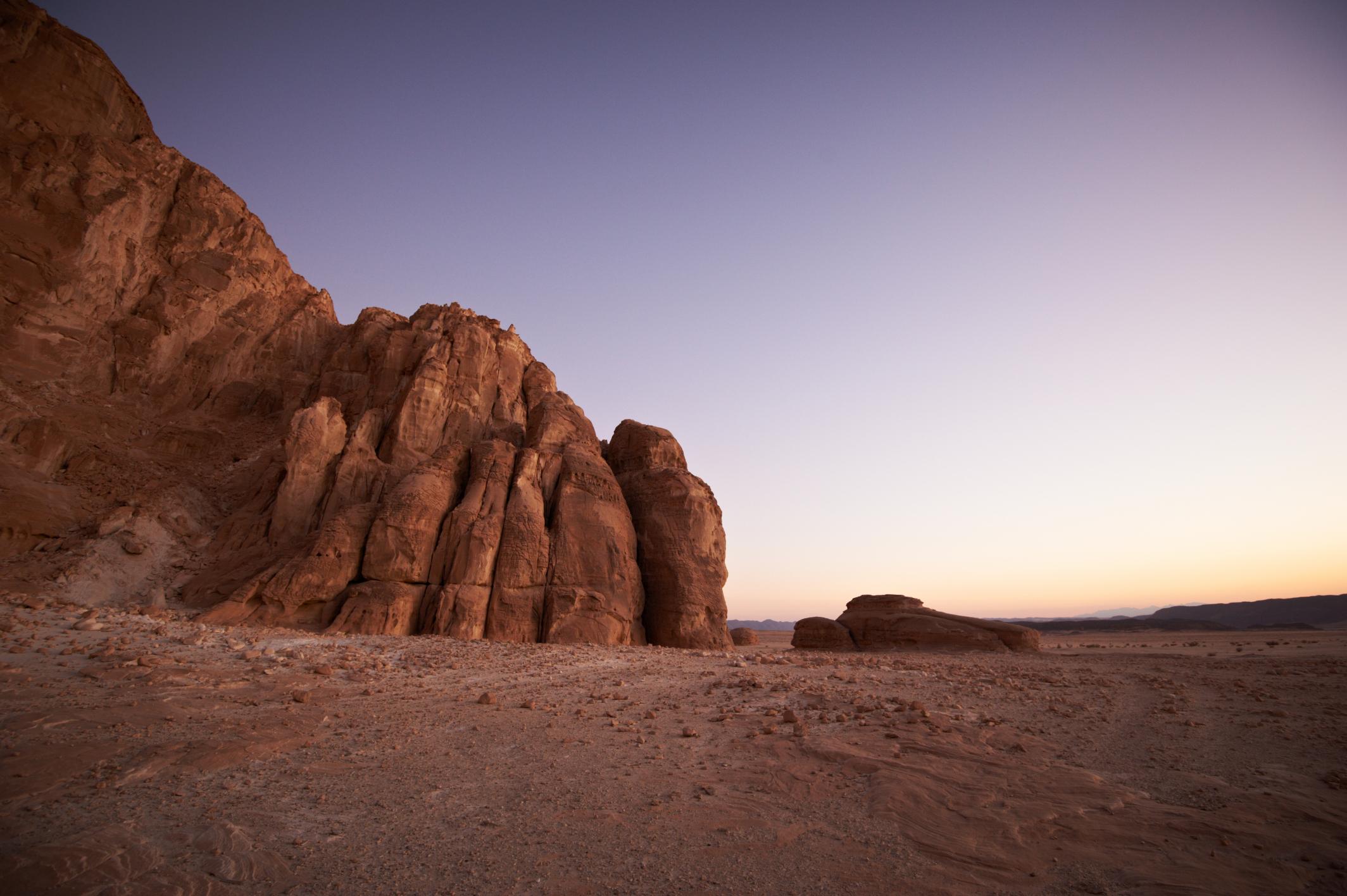
Egypt Sinai Peninsula and It's Name
This strategic region's resources have attracted civilizations through the ages. Ancient Egyptians named it "Mafkat," or the "Land of Turquoise," because of its rich mineral deposits. Egypt has controlled the peninsula since around 3000 BCE, though Roman, Ottoman, and British empires have held it at various times.
The peninsula also houses several vital transportation routes that have served traders and travelers for thousands of years. These paths include the coastal road, known in biblical times as the "way of the land of the Philistines," the central desert crossing, and the Darb al-Hajj, the pilgrimage route to Mecca.
The desert landscape and beaches of Sinai have altered the map of this former mining region. Today, it welcomes adventurers and those seeking peaceful retreats alike.
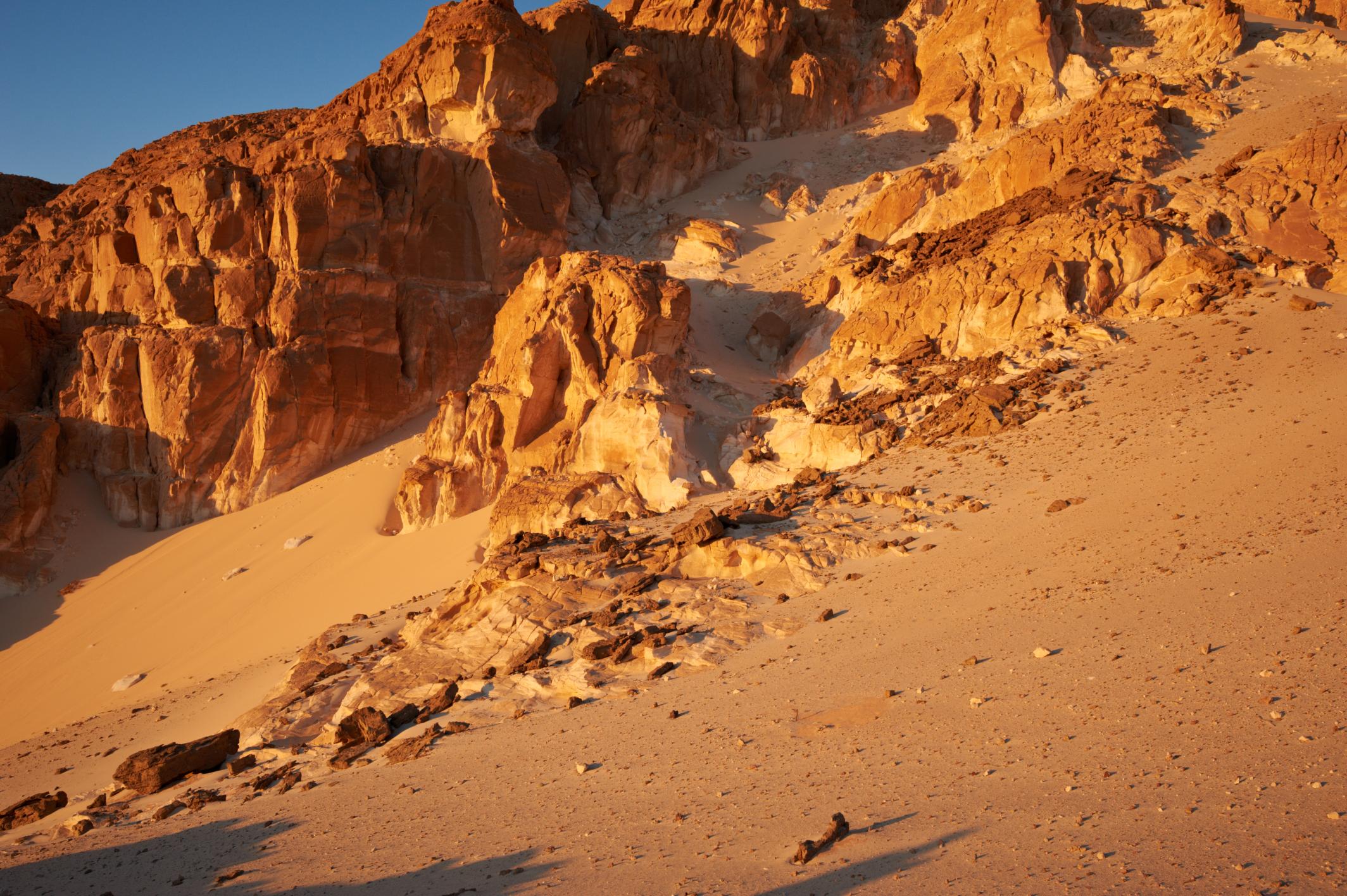
The Majestic Mountains of Sinai
The mountain ranges of Egypt's Sinai Peninsula create a breathtaking backdrop against clear blue skies. These peaks rise sharply from the arid landscape. Mount Sinai (Jabal Musa) stands at 2,285 meters, or 7,497 feet, at the heart of this rugged terrain. This granitic peak, while not the tallest in the region, holds deep significance in three major world religions.
Mount Catherine (Gebel Katherîna) towers over Mount Sinai and stands as Egypt's highest peak at 2,629 meters, or 8,625 feet. The southern complex features other impressive formations like Umm Shumar at 8,482 feet, or 2,585 meters, and Al-Thabt reaching 7,997 feet, or 2,437 meters.
The southern mountain region features igneous rocks shaped by deep, canyon-like wadis that flow toward the Gulf of Suez or the Gulf of Aqaba. A narrow coastal plain separates these mountains from the Gulf of Suez on the western side. The eastern face rises steeply from the Gulf of Aqaba. Clouds often cover the prominent peaks throughout the year, and ice forms on them during winter months.
Mount Sinai's fame
These mountains carry profound historical and spiritual significance. Mount Sinai's fame comes from being the principal site where God appeared to Moses and gave him the Ten Commandments.
The Sinai Trail gives adventurers a chance to experience this mountainous terrain. This long-distance hiking path stretches 340 miles across the peninsula and winds through valleys and mountains. The trail reveals landscapes with remarkable geological features, including canyon walls that showcase red, yellow, and purple hues.
These majestic mountains stand in stark contrast to the desert expanses and distant beaches. The region offers everything from spiritual pilgrimages to challenging hikes. The mountains of Sinai present both physical challenges and spiritual heights that await exploration.

Exploring the Desert Sinai Landscape
The Sinai Desert stretches between towering mountains and coastal shores, revealing an array of The Sinai Desert offers geological wonders and surprising biodiversity. This remarkable arid expanse stretches eastward with no significant change in terrain.
The desert might look barren, but it receives more than 1.6 million acre-feet of water from annual precipitation. This region sits within the great arid climatic belt that crosses northern Africa and southwestern Asia. The southern areas experience intense summer heat and cool nights.
Three distinct geographical zones create an impressive landscape. The northern Mediterranean region shows extensive plains and sand dunes. The central area features a great plateau that slopes from heights above 3,000 feet. The southern region has a horseshoe-shaped ridge that forms three main drainage basins.
hidden of Egypt Sinai Peninsula
The Sinai Desert reveals hidden life to those who look closely. You might spot ibex, gazelles, sand foxes, wildcats, and jackals, though animals are rare. Eagles and falcons rule the skies among seasonal migrants like quail and partridge. The plant life ranges from ephemeral plants to perennial scrub, succulents, and medicinal species. Scientists have found approximately 800 different plant species here, nearly half of Egypt's total flora.
The desert offers extraordinary adventures for visitors, including camel trekking along ancient trade routes, quad biking across stunning dune vistas, stargazing under crystal-clear night skies, sandboarding down the dunes of Wadi El-Rayan, and desert camping under a canopy of stars.
Colored Canyon Egypt
The Colored Canyon stands as a geological masterpiece. Its walls showcase breathtaking hues from deep red to yellow ochre. Scientists have found evidence that this arid landscape was once an oasis of forests and grasslands about 8,000 years ago.
Generations of Bedouin people have passed down deep knowledge of local plants. They use each plant for specific purposes, from medicine to food to practical tools. The Sinai Desert is more than just a stunning landscape; it is a living ecosystem filled with ancient wisdom and untold stories waiting to be discovered.
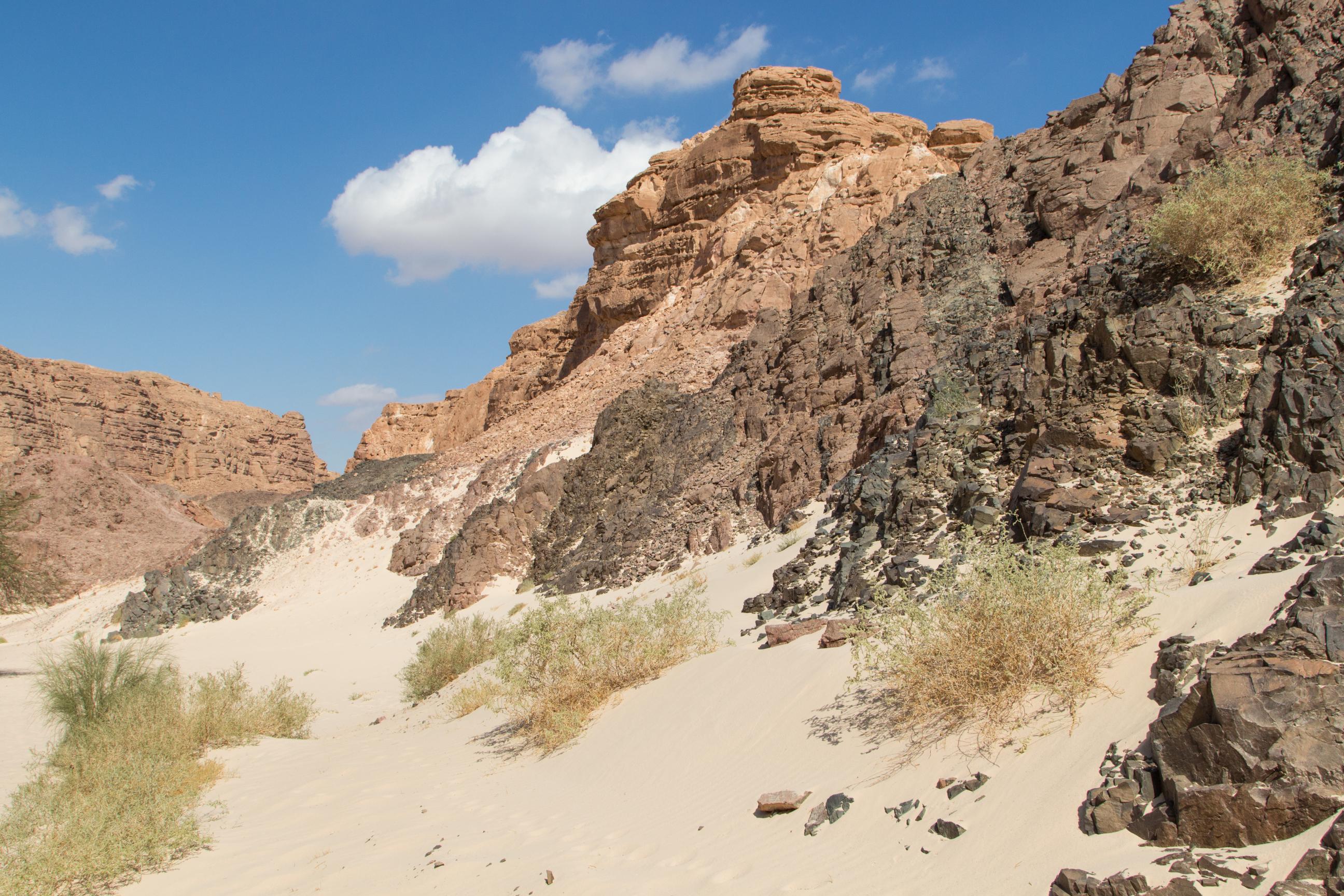
Sinai Beaches and Coastal Wonders
The majestic Sinai Peninsula showcases beaches where golden desert sands meet crystal-clear waters. This stunning coastline creates breathtaking scenery that ranks among the world's finest beach destinations.
The peninsula's diverse shoreline features Sharm El Sheikh and Dahab near its southern tip at the northern end of the Red Sea, a part of the Asian continent rather than Africa. Taba sits close to the northeastern edge, while Nuweiba lies roughly halfway between Taba and Dahab. These northern spots have developed into tourist destinations but remain quieter than their southern counterparts.
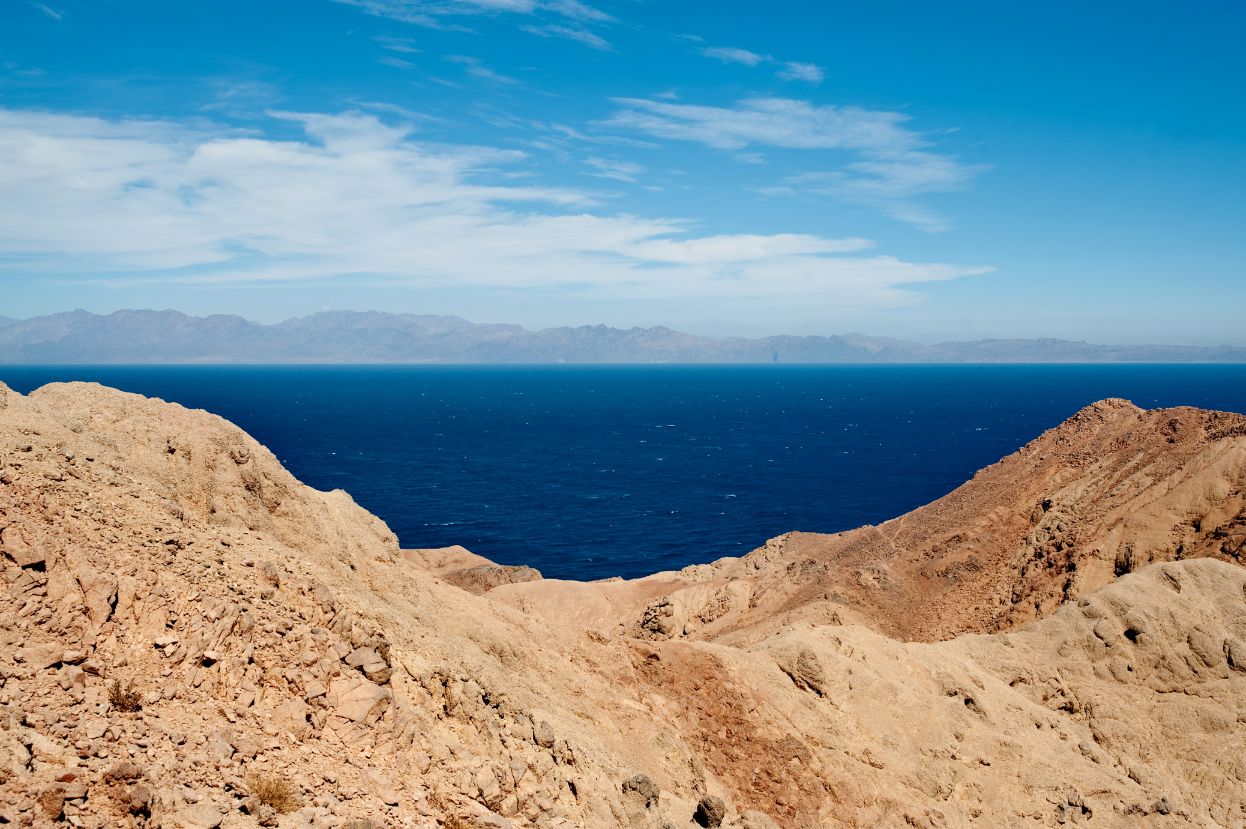
The Popular Sinai Beaches are Coastal Treasures
Each beach area has its unique appeal. Dahab's Masbat Bay anchors the town center, with Asalah to the north and Mashraba to the south. The entire stretch covers about three kilometers of stunning coastline. The beachfront walkway hosts laid-back restaurants and cafés where visitors can enjoy genuine Bedouin hospitality without the hassle of persistent street vendors common in other tourist spots.
The coastline sparkles with hidden treasures. Shark's Bay Beach welcomes visitors with pristine waters perfect for exploring serene coral reefs. Naama Bay combines exciting nightlife with excellent snorkeling spots. Beautiful locations like Ras Um Sid, El Fanar, and Terrazzina Beach provide ideal settings for sunbathing and water activities.
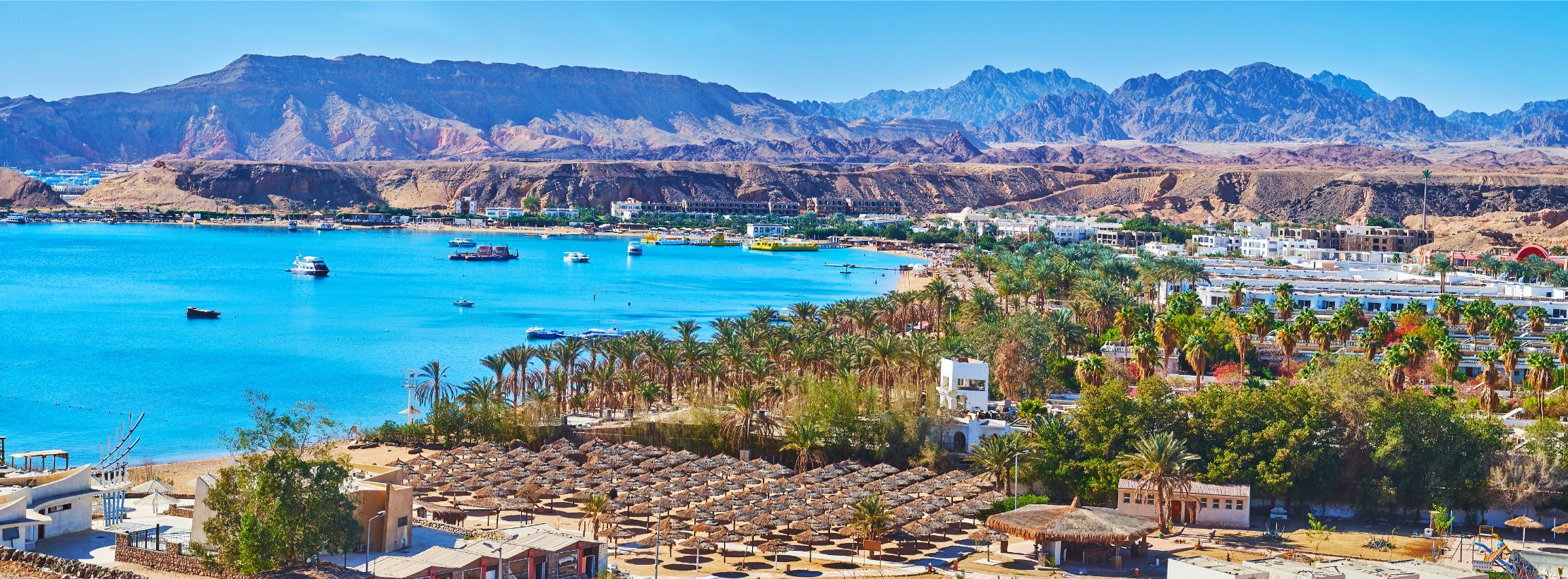
Beaches in Egypt Sinai Peninsula
The beach camps offer an authentic glimpse into the Bedouin lifestyle where desert meets sea. Popular spots include Aqua Sun, Naama Bay, and El Fanar in the Sharm area, along with Big Dune, Moon Island, and Crazy Horse in the Nuweiba region. These rustic spots, surrounded by golden mountains, give visitors a simple outdoor getaway to snorkel, read, or unplug. Most camps provide basic amenities such as toilets, showers, wooden cabins, and hammocks. Welcoming host families prepare warm meals for guests.
The underwater realm near these beaches is spectacular. Snorkelers and divers head to sites like the famous Blue Hole, which features massive coral formations and vibrant sea life. The Ras Muhammad National Park area boasts incredible dive sites teeming with coral reefs, sea turtles, and hundreds of colorful fish species.
Planning Your Perfect Egypt Sinai Peninsula Trip
The timing of your visit to the Egypt Sinai Peninsula can make or break your experience. The best weather occurs from November to March, with comfortable temperatures between 20 and 25 degrees Celsius (68 to 77 degrees Fahrenheit). Summer months from May to September can be brutal as temperatures soar above 40 degrees Celsius (104 degrees Fahrenheit), making outdoor activities risky.
The weather stays pleasant during spring (March to May) and autumn (September to November). These seasons are perfect for visiting historical sites and hiking around Saint Catherine. Winter brings mild days from December to February, although evenings become cooler at higher elevations.
Sharm El Sheik is your perfect choice
Sharm El Sheik makes an excellent base to explore the peninsula. From here, you can easily arrange day tours to key sites like St. Catherine's Monastery or opt for overnight stays to enjoy a fuller experience.
Your hotel can help arrange desert transportation in Sinai, often the smartest choice. This helps you avoid local taxis, which tend to cost much more than those in Cairo.
A three- to four-day trip gives you enough time to climb Mount Sinai, experience Bedouin culture, and enjoy Sinai's beaches. Staying five to seven days allows you to soak in the local culture more deeply.
Ramadan affects restaurant hours and activity schedules throughout the region. Plan your trip carefully during this period and show respect for local customs.
Smart travelers book their accommodation, airport transfers, and popular tours ahead of time. This becomes even more crucial during peak seasons.
Desert Sinai Adventures for Every Traveler
Adventure beckons from every corner of the Egypt Sinai Peninsula, offering extraordinary experiences for travelers of all types. Sinai is more than just a place to visit; it's an active playground where exciting activities create lasting memories.
The desert provides specially designed buggy experiences, making for perfect family outings. Both adults and children can safely traverse rugged terrain in family car buggies, all while taking in breathtaking landscapes and the desert’s endless expanse. Safety comes first, with professional guides leading these thrilling trips to ensure everyone stays secure while having fun.
The desert is full of exciting adventures.
- Camel trekking along ancient trade routes lets you experience the desert just as traders did long ago.
- Quad biking across stunning dune vistas gets your adrenaline pumping as you zip through the sandy terrain.
- Sandboarding down golden dunes feels like snowboarding, but with the warmth of the desert beneath you.
- Stargazing under crystal-clear night skies, far from city lights.
- Bedouin dinner experiences serve up traditional cuisine under starlit skies, giving you a glimpse into local heritage.
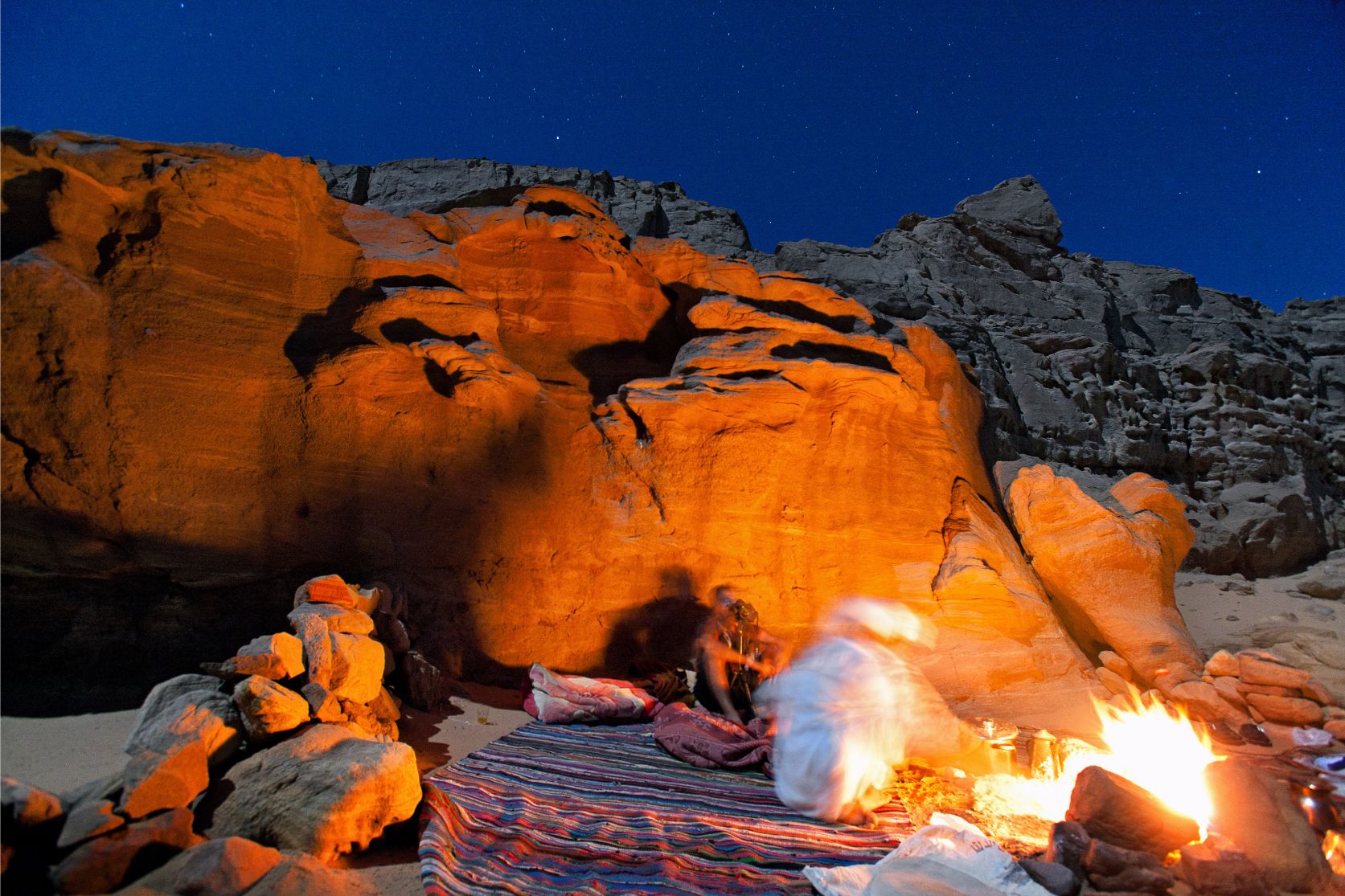
Nature of Egypt Sinai Peninsula
Nature lovers shouldn’t miss the Colored Canyon, a natural maze where sandstone rocks showcase colors ranging from deep red to yellow ochre. This geological wonder requires good physical fitness, as you’ll be climbing down several meters and squeezing through narrow passages.
History enthusiasts will be drawn to Saint Catherine's Monastery, one of the world’s oldest working Christian monasteries. The visit is easy unless you choose to climb Gebel Musa, which requires physical conditioning.
Underwater explorers will find Dahab’s Blue Hole a must-visit, as it’s a premier diving destination that attracts enthusiasts from around the world. Ras Mohammed National Park offers additional underwater adventures with vibrant coral reefs and rich marine life, making it perfect for snorkeling.
Your time in Sinai will quickly show why this region ranks among the top adventure spots, turning natural wonders into an exciting playground for exploration.

The Sinai Peninsula blends ancient history with natural wonders, creating an unforgettable experience. Here, sacred mountains reach toward the heavens, pristine beaches kiss crystal-clear waters, and desert landscapes hide countless treasures beneath their golden sands.
This unique corner of Egypt offers adventures for every kind of traveler. You can climb the historic Mount Sinai at dawn or dive into vibrant coral reefs. As night falls, you’ll have the chance to share stories with Bedouin hosts under starlit skies. Each experience adds a new chapter to your Sinai story.
What makes Sinai truly magical is its mix of spiritual significance and natural beauty, ancient traditions and modern comforts. Each season here has its charm. Winters are cool, perfect for mountain treks, while spring days are ideal for desert exploration. The shores of the Red Sea offer activities throughout the year.
Sinai is where adventure meets serenity, where desert landscapes meet coastal bliss, and where ancient history meets modern luxury. Whether you seek spiritual enlightenment, adrenaline-pumping activities, or simply a tranquil escape, Sinai promises a journey into a world of unparalleled beauty.
Related Articles
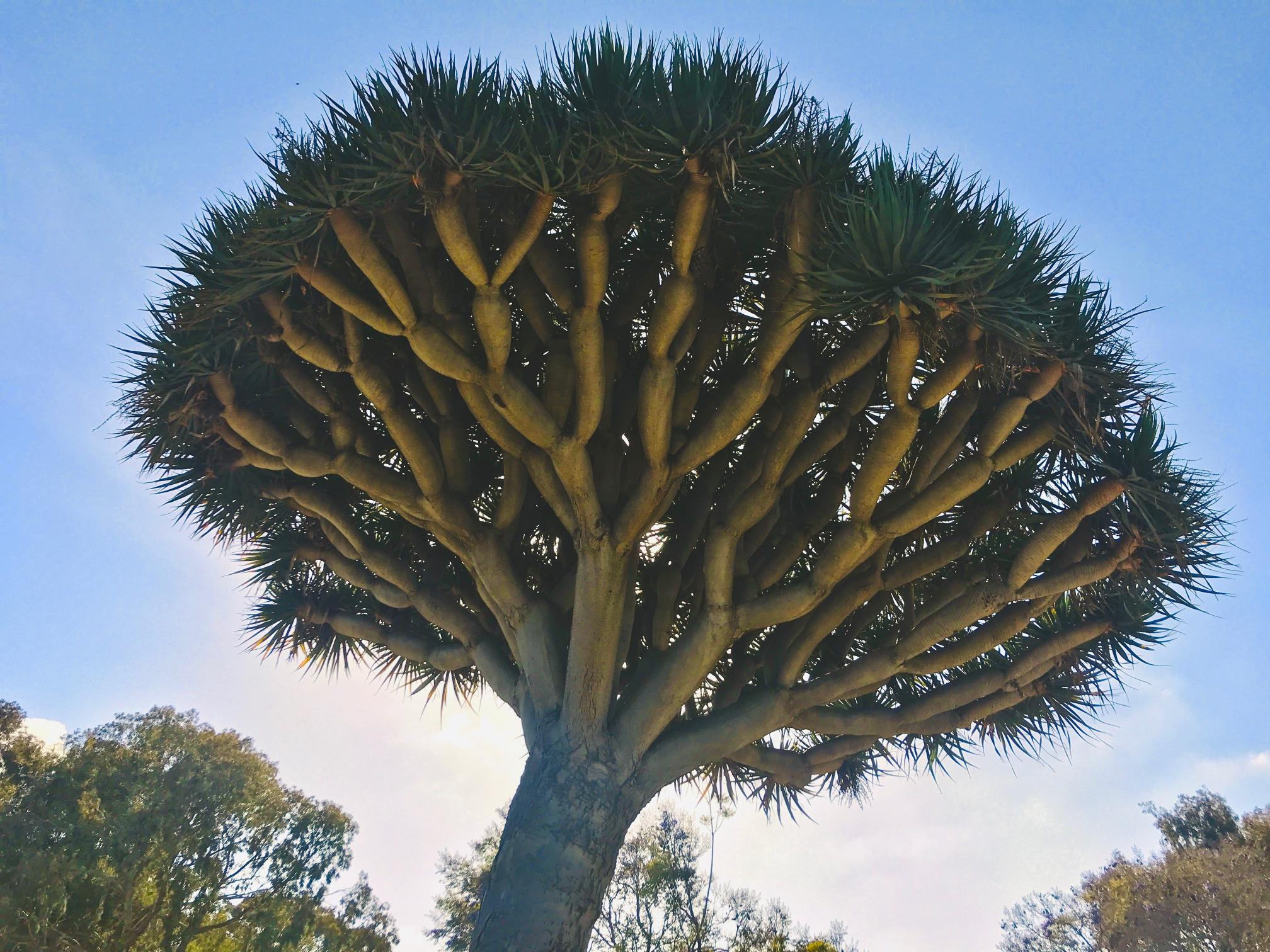
The Rare Trees in Egypt
The hidden green gems of Egypt and discover a side of the country you never knew existed. The Rare Trees in Egypt.
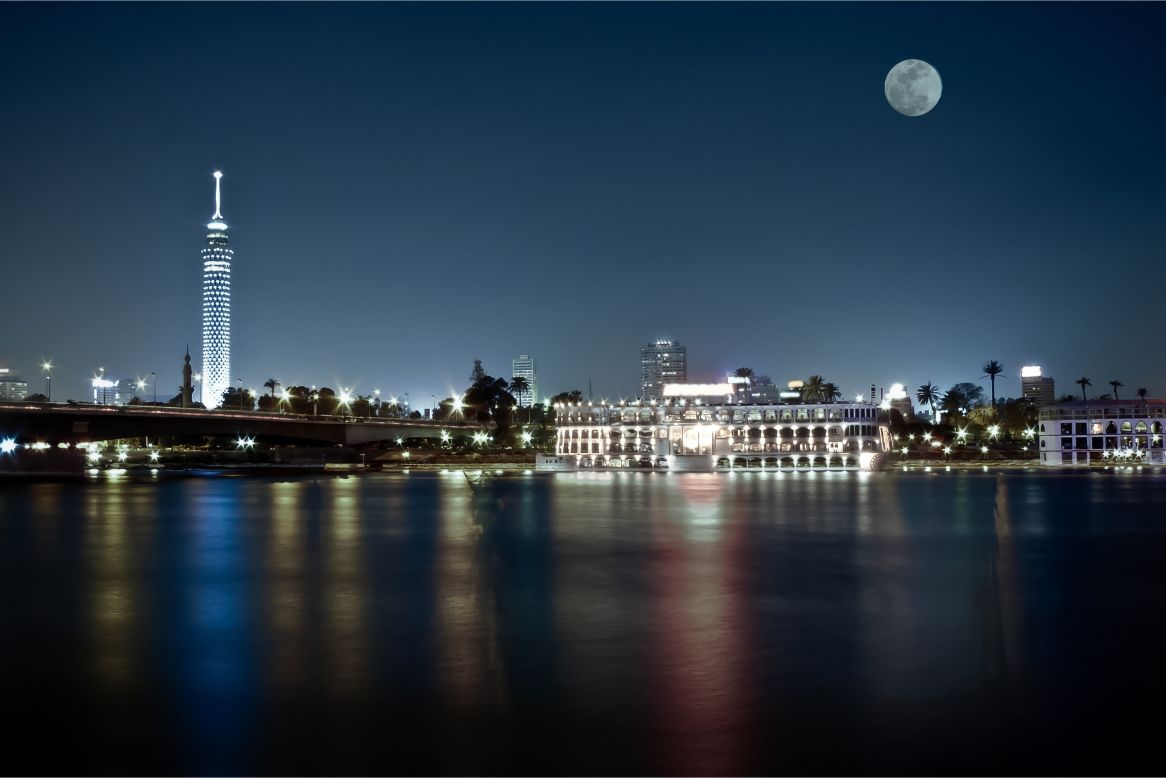
Best Time to Travel to Egypt
The best time to visit Egypt often surprises first-time travelers. While winter draws crowds to the pyramids.

Start your adventure in Egypt
As the cradle of one of the world's oldest civilizations, Egypt continues to captivate the hearts and minds of travelers from across the globe. From the iconic pyramids of Giza to the serene waters of the Nile, and the bustling bazaars of Cairo, Egypt offers a wealth of history, culture, and adventure for intrepid explorers. Let's embark on a magical journey through this captivating land and uncover the treasures that await those who venture to Egypt.
